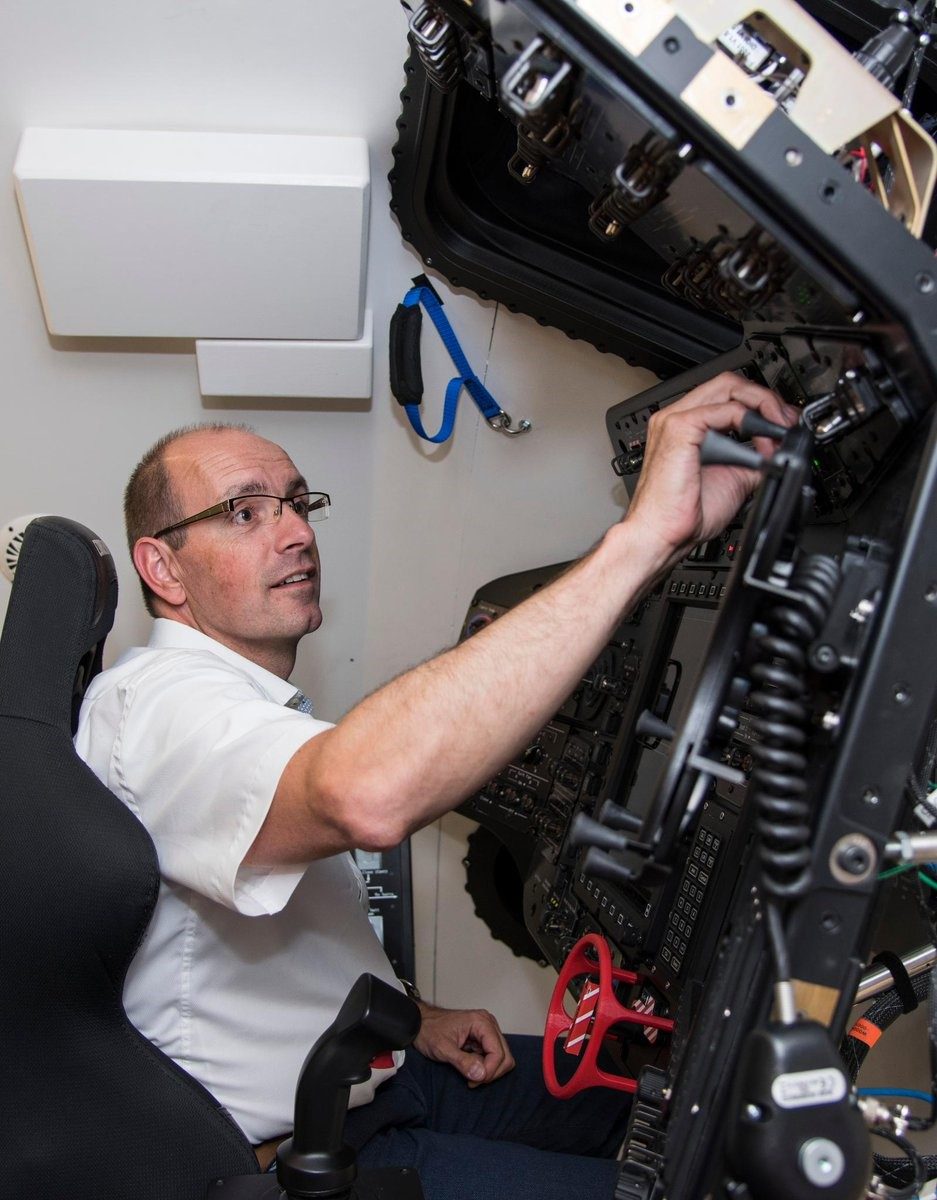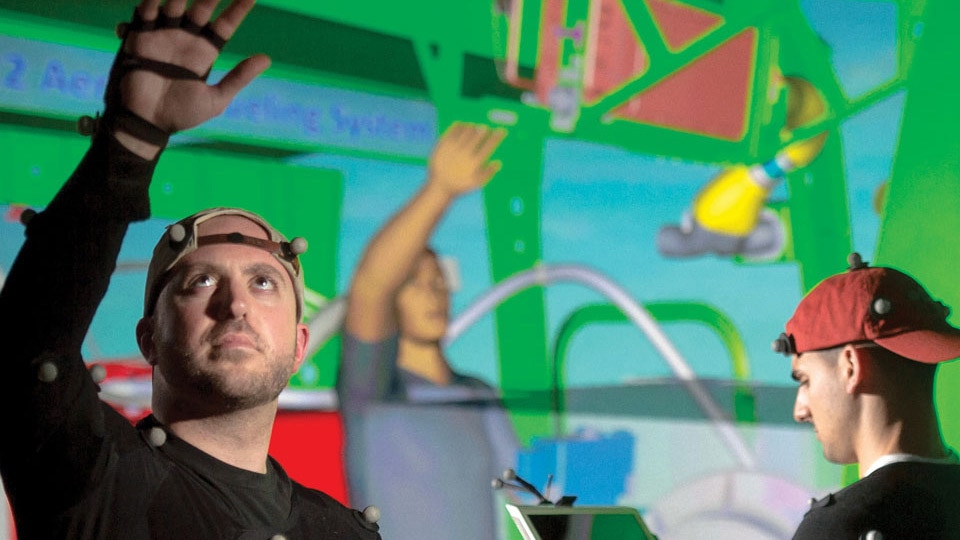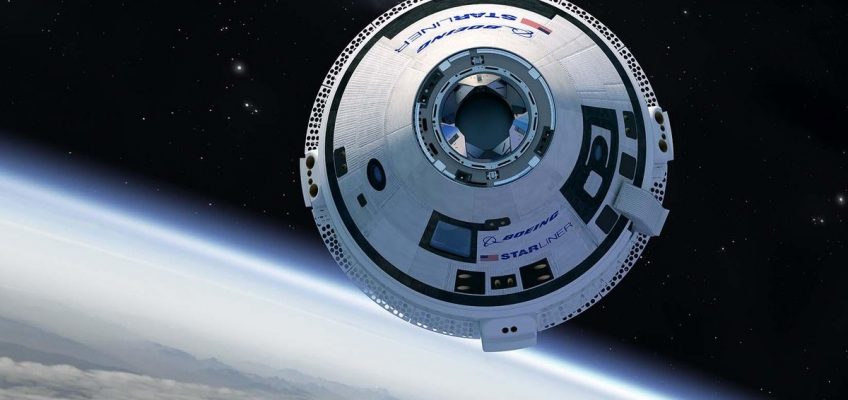Dutch company BlueTea has partnered with Boeing to build an advanced simulated spaceflight training environment.
The power of immersive technologies to enhance learning is something we’ve covered a lot here on Tech Trends in the past, and we only really started to scratch the surface of what is possible there. “Learning by doing” is a powerful concept, which essentially boils down to the fact we remember things we’ve experienced first-hand much better than those we’ve merely read, watched or were told about.
Learning by doing is a powerful concept embodied by Virtual Reality Click To TweetIt of course takes extensive (and very intensive) training for astronauts to learn how to handle any situations and potential emergencies that could arise in space. This is why it makes sense to leverage VR tech to practice and imprint correct responses to a variety of high-pressure scenarios that that they might encounter – which is exactly what BlueTea, a Dutch developer of modular 3D training simulations is doing.
BlueTea will work with Boeing to build a simulated training environment for Astronauts Click To TweetThe company was contracted by Boeing to build a Virtual Reality system based on advanced Simulated Training technology and BlueTea’s own VirtualStudio software, so they can prepare Astronauts for the unique challenges of their spaceflight while their feed are still safely planted on planet Earth.
Their solutions support hands-on training with simulations and gamification. Adding gaming elements to the training tools increases the fun factor, leading to more efficient knowledge transfer. The user experience is more intense and users learn the process or procedure faster as a result.
Their solutions support hands-on training with simulations and gamification Click To Tweet
“As a small Dutch based company with smart innovation power we’re going to help astronauts train in the most effective way, using Virtual Reality,” says BlueTea CEO Ruud Dullens.
The Limburg-based company claims that its location in the southernmost region of the Netherlands gives them something of a strategic advantage, since they’re “sandwiched between Germany and Belgium and no more than 90 minutes away from at least 5 international airports and 6 universities.”
Dutch companies often punch above their weight in terms of innovation Click To TweetIt is interesting how Dutch companies often punch well above their weight in such innovative areas. In fact, this culture of innovation in the Netherlands was something that Tech Trends recently experienced as guests of the #HollandMobility press tour we joined last month.
Boeing will now be integrating the BlueTea software into its systems, coordinating between its Virtual Reality Lab in Philadelphia and the Starliner training systems in Houston. Boeing’s CST-100 Starliner is under development in collaboration with NASA’s Commercial Crew Program to transport humans to low-Earth orbit destinations like the International Space Station.
Boeing's CST-100 Starliner is under development with NASA's Commercial Crew Program Click To Tweet
The point of the system is to provide astronauts with safe and cost-effective training Click To Tweet
“Ultimately, the point of the system is to provide astronauts with a safe and cost-effective training environment in the form of a fully virtual 3D cockpit,” explains Dullens, adding that in order to do that, “each and every component of the Starliner’s virtual cockpit, right down to the tiniest switch, must be digitally connected to the spacecraft’s physical simulator located in Houston. That way, astronauts can prepare for every possible scenario, both virtually and in the real world.”
The first phase of the project involves creating a 3D simulation of part of the cockpit and linking it to the hardware simulator using their in-house software package VirtualStudio. This is unique because its intelligent 3D models and training scenarios are completely separate, meaning that a training manager can come up with endless combinations of controls, tools and events. The second phase of the project involves developing a full 3D cockpit to communicate with the hardware simulator. From that point on, the astronauts in training can use the scenarios designed by their training manager in the VR lab to practice in a real-time and fully interactive environment, no matter where they are in the world or what medium they have available (PC, tablet, VR glasses or other devices).
Virtual training has proved to be an effective way of preparing for real-life practice. It is also an ideal training environment when a physical simulation would be too expensive or hazardous, concludes Dullens. And application such as these show how (particularly in this case) the sky really is the limit as far as applying immersive technologies to learning, training and simulation environments.
Tech Trends’ Virtual Reality Consultancy services offers support for companies looking to get a foothold in the growing Mixed Reality spectrum and enhance their brand strategy with these exciting new technologies.
Every component of the virtual cockpit has to be connected to the physical simulator in Houston Click To TweetAlice Bonasio is a VR Consultant and Tech Trends’ Editor in Chief. She also regularly writes for Fast Company, Ars Technica, Quartz, Wired and others. Connect with her on LinkedIn and follow @alicebonasio and @techtrends_tech on Twitter.









